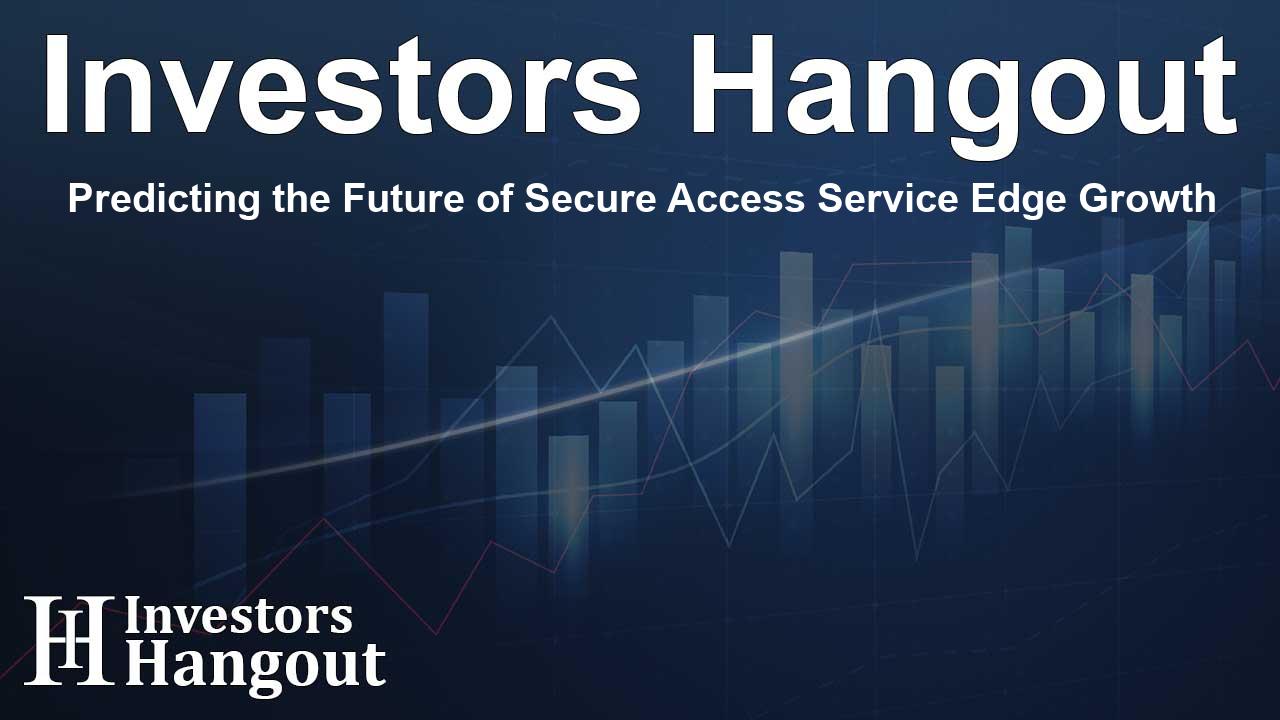Predicting the Future of Secure Access Service Edge Growth

Understanding the Secure Access Service Edge Market
The rise of cloud technology is shifting the landscape of network security. In recent years, the Secure Access Service Edge (SASE) market has caught significant attention, with its valuation projected to grow from 2.3 billion dollars to an impressive 19.1 billion dollars by 2031. This extraordinary growth at a compounded annual growth rate (CAGR) of 18.1% indicates a strong shift towards unified cloud security solutions tailored for modern enterprises.
Drivers of Market Growth
One of the primary drivers for this growth is the increasing reliance on cloud solutions across various industries. Businesses are embracing cloud services for key benefits such as scalability, flexibility, and cost-efficiency. However, these advantages also come with challenges, notably security vulnerabilities like inadequate visibility, potential attacks, and insufficient access controls.
The SASE Solution
SASE provides a comprehensive solution to these issues by enabling a zero-trust security model that allows only authorized users to access specified cloud resources. This controlled access not only bolsters security but also simplifies management across diverse cloud environments.
Changing Work Dynamics
The COVID-19 pandemic has accelerated the shift towards remote work, further increasing the demand for SASE solutions that ensure secure access to cloud applications from any location. Organizations are now recognizing the need for effective network security that supports a flexible work model.
Emerging Trends in SASE Adoption
As companies navigate this changing landscape, a significant trend has emerged: the integration of zero-trust security frameworks coupled with micro-segmentation capabilities. These approaches ensure that trust is never assumed for users or devices, necessitating a continuous evaluation of access requests based on various risk factors. This strategy not only enhances security but also aligns with regulatory compliance measures that many businesses are starting to prioritize.
Cloud-Agnostic Solutions
Another noteworthy trend is the growing demand for cloud-agnostic SASE solutions. Vendors are innovating to develop offerings that provide seamless security measures across public, private, and hybrid clouds, promoting a unified security approach regardless of the underlying infrastructure.
Market Report Insights
A comprehensive analysis of the Secure Access Service Edge market indicates several key elements:
- Revenue in 2024 is expected to be $2.3 billion.
- By 2031, it is estimated to peak at 19.1 billion dollars.
- The anticipated growth rate stands at 18.1%.
Market segmentation shows a dominance in the platform component, which is likely to capture over 60% market share due to its versatility and feature set. Additionally, sectors such as IT and telecom are forecasted to lead the application space, driven by the needs of managed service providers.
Regional Insights and Key Players
Regionally, North America is set to maintain its position as a frontrunner in the SASE market through 2031, with several leading vendors based in the United States. Companies like Cisco, Palo Alto Networks, and VMware are recognized as key players, continuously enhancing their SASE offerings to meet evolving demands.
Strategic Partnerships
The market may also witness consolidation among SASE vendors, as partnerships become a significant strategy to offer expanded capabilities and comprehensive solutions.
Looking Towards the Future
As the landscape of cybersecurity evolves, organizations are increasingly converging networking and security strategies. The traditional barriers are being dismantled, fostering a demand for integrated platforms like SASE that provide cohesive security and network solutions.
With this shift, companies are empowered to implement consistent security measures tailored to diverse user environments, significantly simplifying operations for IT and security teams alike.
Frequently Asked Questions
1. What is the projected growth of the Secure Access Service Edge market?
The market is expected to grow from $2.3 billion in 2024 to $19.1 billion by 2031, with a CAGR of 18.1%.
2. What are the primary drivers of this market growth?
The primary drivers include increasing cloud adoption, rising concerns around security challenges, and the demand for flexible work arrangements.
3. How does SASE enhance security?
SASE enhances security by providing a zero-trust framework, ensuring that only authorized users can access applications and data, thereby minimizing risks.
4. Which regions are leading the SASE market?
North America is expected to dominate the SASE market through 2031, with several major vendors based in the U.S.
5. Who are the key players in the SASE market?
Notable players include Cisco, Palo Alto Networks, VMware, and Barracuda Networks, among others, who are innovating their activities to enhance SASE solutions.
About Investors Hangout
Investors Hangout is a leading online stock forum for financial discussion and learning, offering a wide range of free tools and resources. It draws in traders of all levels, who exchange market knowledge, investigate trading tactics, and keep an eye on industry developments in real time. Featuring financial articles, stock message boards, quotes, charts, company profiles, and live news updates. Through cooperative learning and a wealth of informational resources, it helps users from novices creating their first portfolios to experts honing their techniques. Join Investors Hangout today: https://investorshangout.com/
Disclaimer: The content of this article is solely for general informational purposes only; it does not represent legal, financial, or investment advice. Investors Hangout does not offer financial advice; the author is not a licensed financial advisor. Consult a qualified advisor before making any financial or investment decisions based on this article. The author's interpretation of publicly available data shapes the opinions presented here; as a result, they should not be taken as advice to purchase, sell, or hold any securities mentioned or any other investments. The author does not guarantee the accuracy, completeness, or timeliness of any material, providing it "as is." Information and market conditions may change; past performance is not indicative of future outcomes. If any of the material offered here is inaccurate, please contact us for corrections.